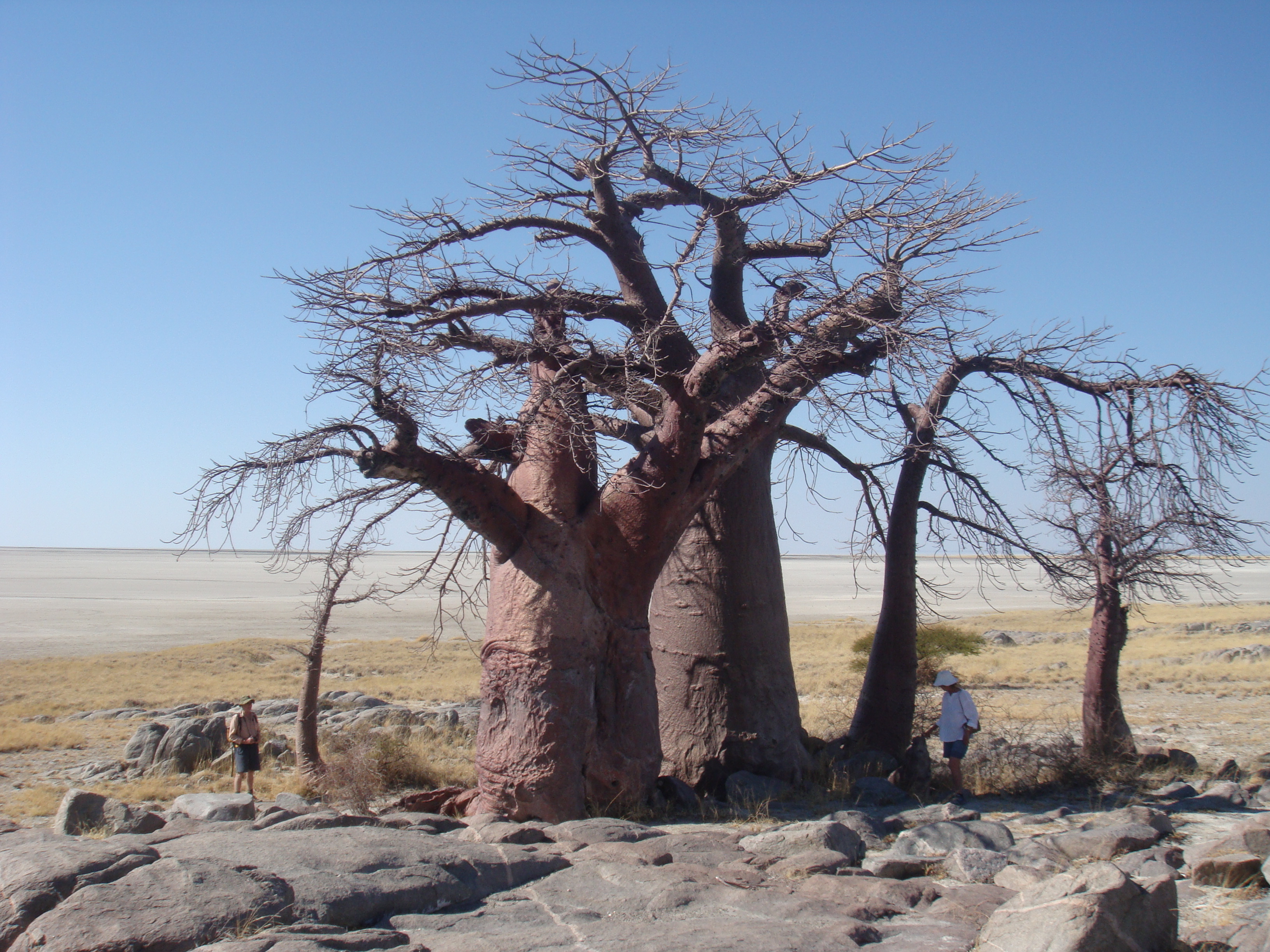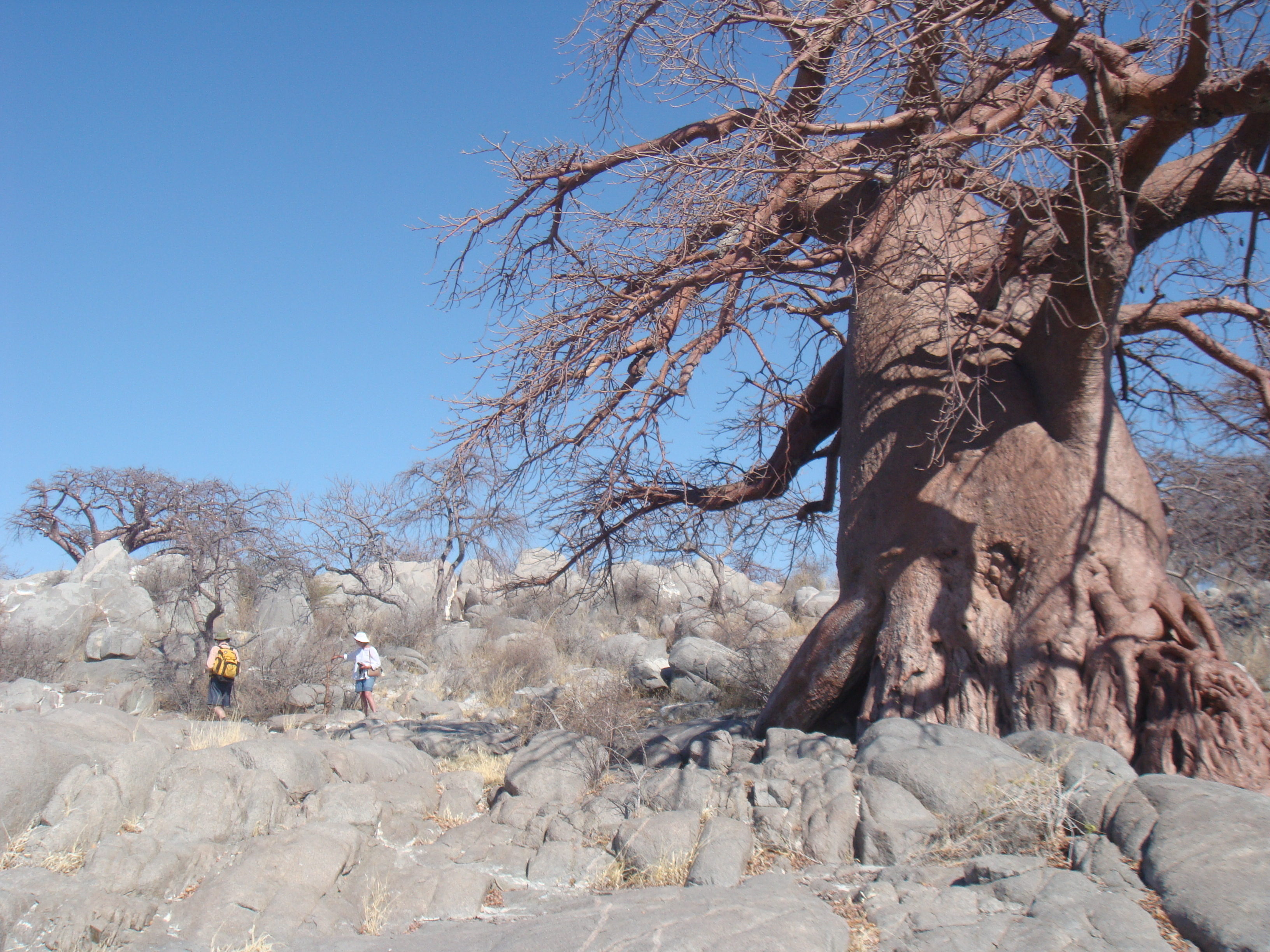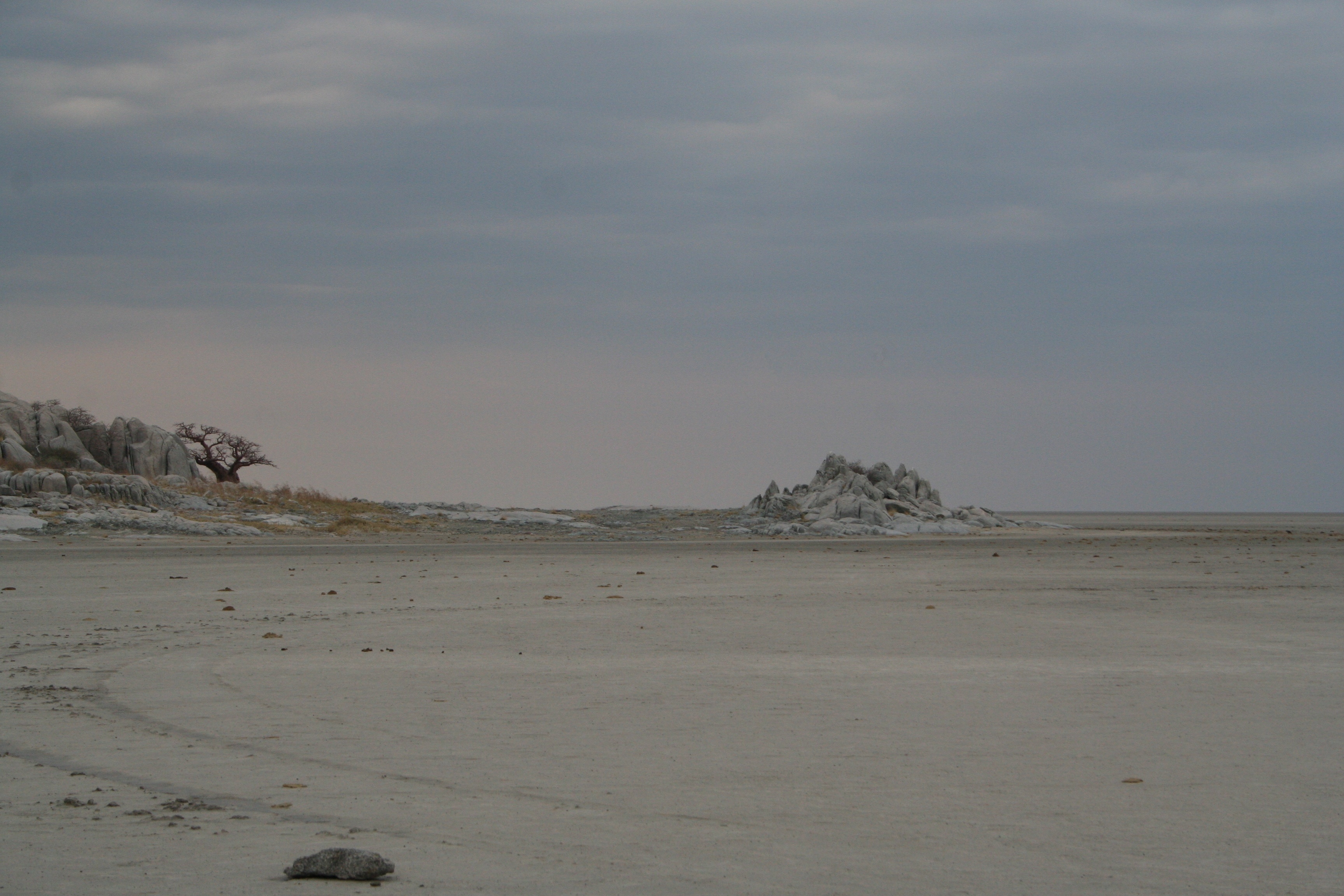NEW PAPER ALERT

Size distribution of Baobabs on Kubu “Island”, Sowa Pan (northern Botswana): an indicator of late-stage evolution of the Makgadikgadi palaeo-lake and climate change?
The Plant Conservation Unit (PCU) is pleased to announce the publication of an exciting new paper by Andrew Moore, Tyrel Flügel, Trish & Martin Hutton-Squire, and Glynis Humphrey (PCU PhD Candidate) in the South African Journal of Geology. The article is titled, " Size distribution of Baobabs on Kubu “Island”, Sowa Pan (northern Botswana): an indicator of late-stage evolution of the Makgadikgadi palaeo-lake and climate change?” The abstract is provided below but the full paper may be downloaded here.
“We have investigated the size class distribution (SCD) of baobabs on a rocky outcrop, known alternatively as Kubu or Lekhubu, located in the southwest of Sowa Pan, northern Botswana. This study is aimed primarily at determining whether baobab girths show any systematic distribution relative to elevation, linked to palaeo-lake levels during the late Holocene. A secondary objective was to determine whether the SCD of the species might reflect late Holocene climatic changes. Our data show no systematic link between baobab size and elevation, and that the distribution of the species on the outcrop does not provide evidence for former levels of the palaeo-lake. Rather, the population structure is strongly influenced by large, old baobabs, which have provided localized long-lived seed centres favourable for sporadic germination and recruitment to the Kubu population. The broadly unimodal SCD of the Kubu baobab population does not appear to reflect climate changes over the lifespan of the species (up to ~1500 years). This is most likely linked to the development pattern of the species, with rapid growth over the first quarter to half of the tree's life, followed by subsequent very slow growth rates."
Below are representative images of the baobab population sampled on Kubu Island:

(a) Mixed baobab sizes in cluster 16 on the eastern size of the Kubu outcrop. Pan floor in the background. The two trees in the foreground are large baobabs, while the remainder are small specimens (< 1.8 m trunk diameter). One of the authors Martin Hutton-Squire (M H-S, left) is standing next to a small baobab (16F) 7 m distant and at an elevation <<1 m lower than the two larger trees, while Trish Hutton-Squire [T H-S] (right) is pointing to a growing stump very similar in diameter to 16F.

(b) Spatial relationship between the small baobab shown next to T H-S in this photograph and an attendant large baobab (B19A), which was likely the source of the original seed.

(c) View of large baobab B23 looking north. This emphasises the minor difference in elevation between this specimen and the pan floor (foreground).
